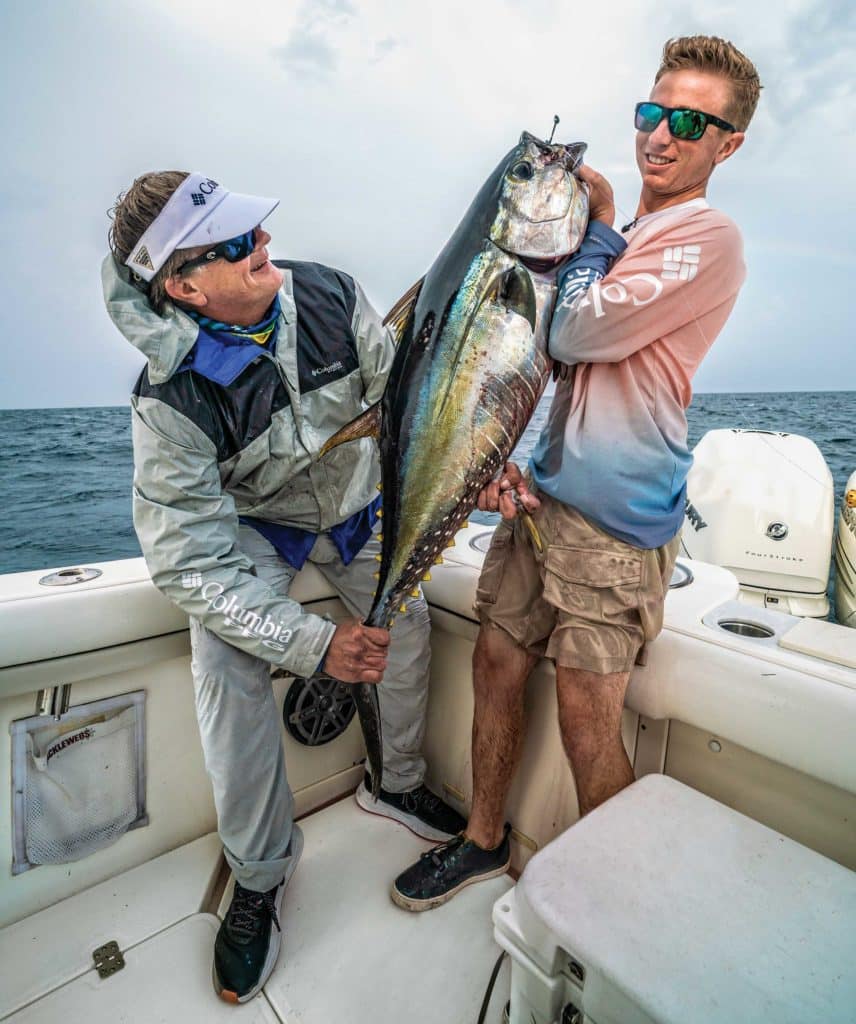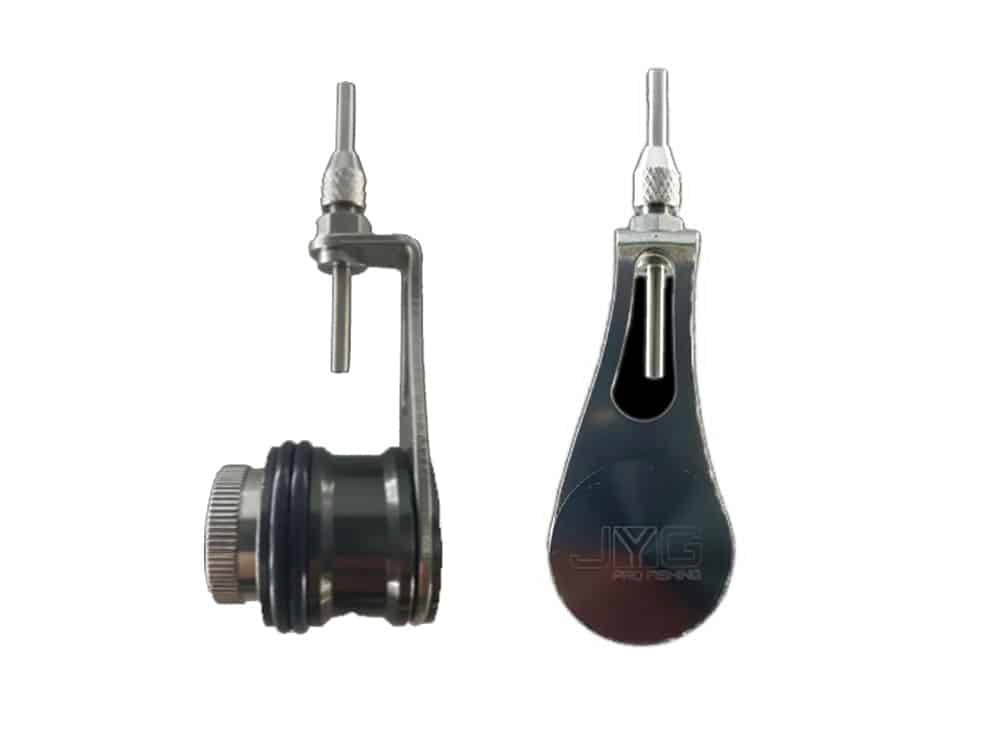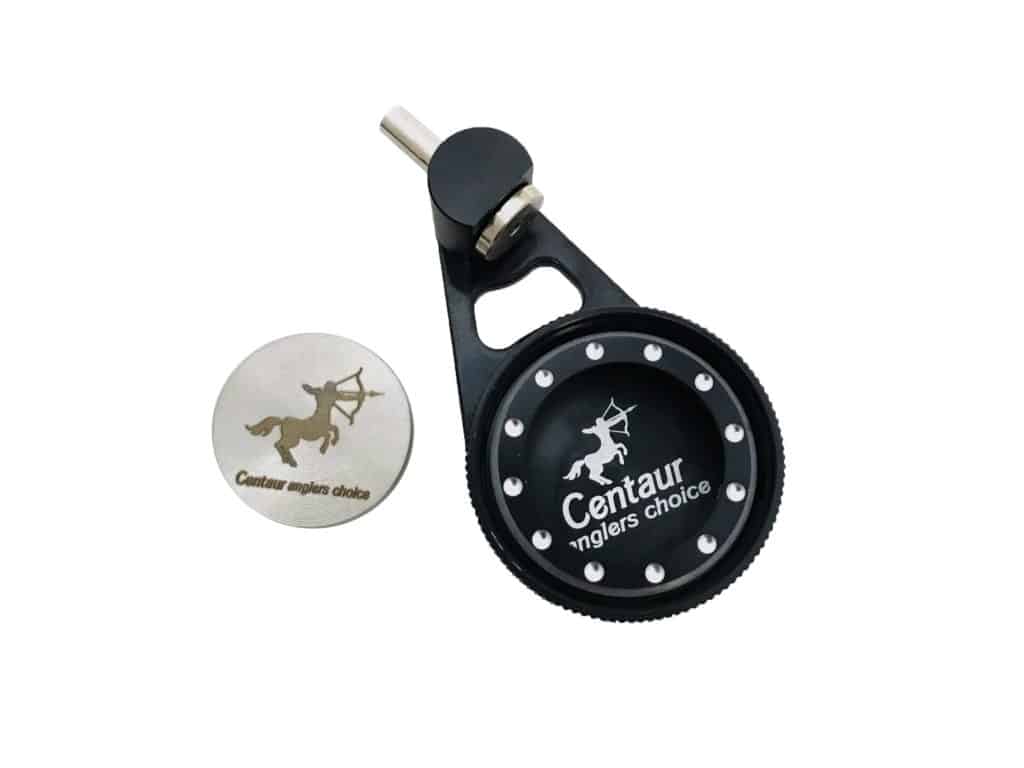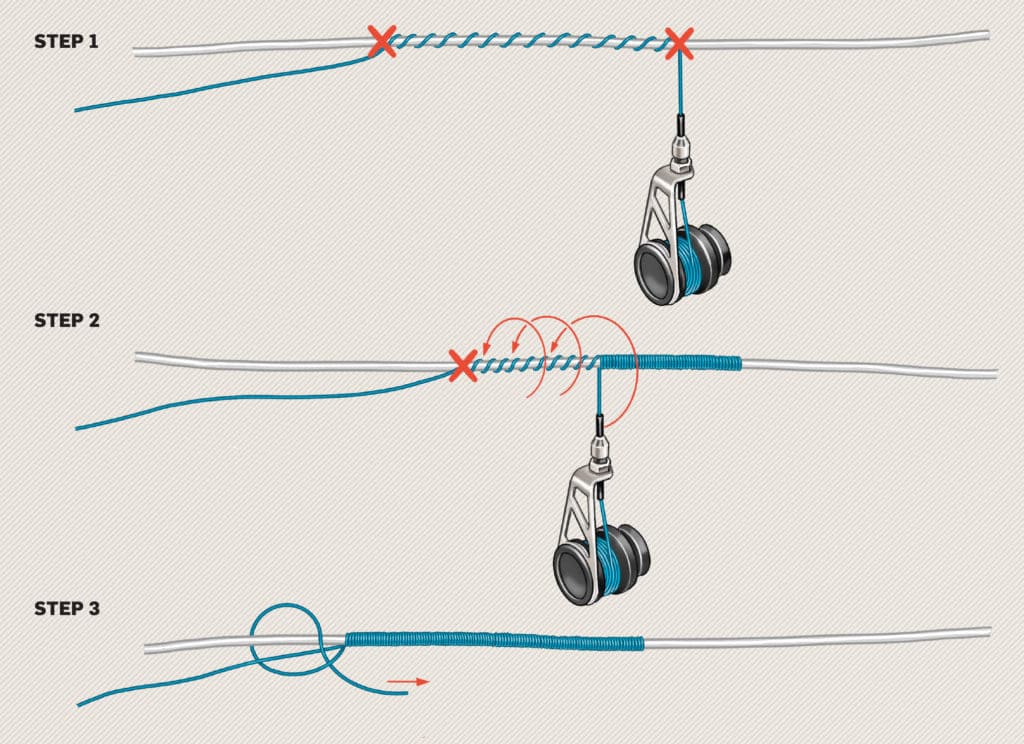
High-performance casting knots allow the smooth transitioning of long leaders onto and off reel spools, across reel-bail rollers and through rod guides. When casting to tuna, dolphin and billfish, long leaders prevent the main line from contacting fish and possibly parting.
The Jersey Kid
Ryan DeGraw excels at catching yellowfin and bluefin tuna on topwater poppers. He prefers leaders as long as 10 feet when he expects to tangle with big tuna, particularly bluefins. However, long casts are also essential. Using spin tackle spooled with 65-pound braid and 60-pound wind-on leaders, DeGraw achieves impressive casting distances along with smooth leader and knot passage through his tackle systems by incorporating the PR bobbin knot.
Bristol Face-Off
I’m a big proponent of the Bristol knot for joining a long leader to a short length of double line created with a Bimini twist, spider hitch or surgeon’s loop. I discussed the merits of the two knots with DeGraw on a recent fishing trip out of New Jersey’s Manasquan Inlet.
Whereas the Bristol requires a doubled main line to fasten to the leader, the PR bobbin knot joins either a fluorocarbon or monofilament leader to a single strand of braid or mono main line. This eliminates a couple of problems with the Bristol knot: the double-line knot snagging on a rod guide during the cast or retrieve, and wear and tear on the double-line knot after repeated casting.

“The PR bobbin knot is one of the best line-to-leader connections, especially for heavy-duty casting,” DeGraw says. “It’s such a slim knot that it winds through the guides very well. We’re casting large topwater lures, which put a lot of strain on line-to-leader connections, and I’ve found the PR bobbin knot to be the most durable against wear. It spreads stress evenly across the entire connection, which is usually around 3 inches long. It’s low-profile, so you can pitch lures way out. And it’s low-maintenance, which lets you cast all day and fight powerful fish with confidence.”

It’s essentially a compression or finger-trap-knot connection, similar to the FG knot. Both rely on the grip of the main line that wraps around the leader, resulting in straight-line pull. But while the FG can be built on the water as needed, the PR bobbin knot falls into the rigging category, something better prepared the night before. Because it’s a connection assembled under tension, it requires a bobbin tool and a bit of time.
Like many anglers, DeGraw incorporates many of his own tweaks to the connection. He’s obsessed with casting for tuna and has landed them up to 80 pounds on spinning tackle. Incorporating the PR bobbin knot makes that a lot more effective.

Rigging the PR Bobbin Knot
Step 1:
Loosen the drag on the bobbin and spool it with 5 or 6 feet of the main line, then tighten the bobbin drag.
Lay the leader parallel to the braided fishing line, overlapped about 10 inches just above the bobbin. Pinch the intersecting lines in two places. Spin the bobbin down the leader in a loose spiral 10 to 12 times.
While maintaining a firm pinch at both ends of the spiral, reverse the direction of winds, spinning the bobbin under its own weight back over the spiral in tight wraps, snug against one another.
It’s critical to prevent the leader from spinning as the bobbin moves down.
Keep the bobbin spinning and wrapping until 2 or 3 inches of the leader and spirals are covered.
Step 2:
Pull several inches of braided line from the bobbin tool, then clip the braid and retire the tool.
Make two half-hitches with the braided line tag around the leader. Tie a three-wrap half-hitch, cinch it down, and trim the tag ends.
Step 3:
Anglers employ various methods when finishing the knot. Half-hitches, multiple half-hitches and opposing half-hitches suffice, but the Rizzuto finish is the most secure. Many choose to carefully melt the stub of the mono leader with a flame and create a bump to prevent wraps from slipping off the end under extreme pressure.









